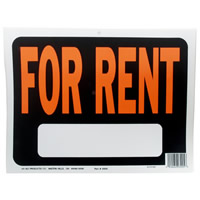Do Declining Minneapolis Vacancy Rates Matter To Duplex Owners?
 One of the topics most important to housing providers that frankly, just doesn’t seem to come up often, is Minneapolis and St Paul apartment vacancy rates.
One of the topics most important to housing providers that frankly, just doesn’t seem to come up often, is Minneapolis and St Paul apartment vacancy rates.
Granted, they’ve been insanely low for years now. In fact, they’ve been below 5%, which is considered a balanced market between supply and demand so long it seemed rents would rise annually in a linear fashion.
According to the city of Minneapolis’ Rental Housing Vacancy website, which extrapolates data from both industry analyst Marquette Advisors and the commercial real estate service CoStar, the most recent vacancy rate is 5.8% in buildings with 5 or more units that have been open at least 18 months or reached 90% capacity.
Marquette Advisors suggests vacancy rates in Minneapolis went from 6% to 5.1% from the second to third quarter, and St Paul saw a drop from 5.0% to 3.9%.
The vacancy rate in the sought-after suburbs increased from 3.4% to 4% between the second and third quarters. This may be temporary and the result of the surge in completed new construction; particularly in the western suburbs. That area has seen 2500 new units become available this year. There are 3800 more slated for completion by the end of next year.
When including recently completed buildings that haven’t completed their lease-up period, the vacancy rate metro-wide stands at 5.6%.
Nonetheless, the average rent in the Twin Cities rose to $1460; an increase of 4.5%.
So what does this have to do with Minneapolis and St Paul duplexes? After all, living in a duplex with a yard is a lot different than being in a small unit in a multi-story apartment building.
One possible scenario is that as the economy slows and more units come online, vacancy rates increase. And when they increase, housing providers are forced to reduce the amount of rent they charge in order to fill vacancies. Under this model, tenants would compare brand-new buildings with high-end amenities to an older unit in a duplex and either choose the former or expect discounted rent in the smaller building. This is the scenario city officials call “naturally occurring affordable housing”.
Of course, when rents decline, so too do property values. A duplex is an income property, and to a large extent, its value is determined by the amount of revenue it generates.
An alternative possibility may be rising mortgage interest rates make home ownership less affordable, which causes many would-be home buyers to rent instead, thereby increasing demand. The result, theoretically, would be rents would rise.
In either case, watching vacancy rate trends can help housing providers strategize. Is it smart to lock a unit up in a long-term lease at lower rents in order to make sure it’s occupied? Or is it time to update the kitchen or bathroom?
Only time will tell which way things are going to play out.

